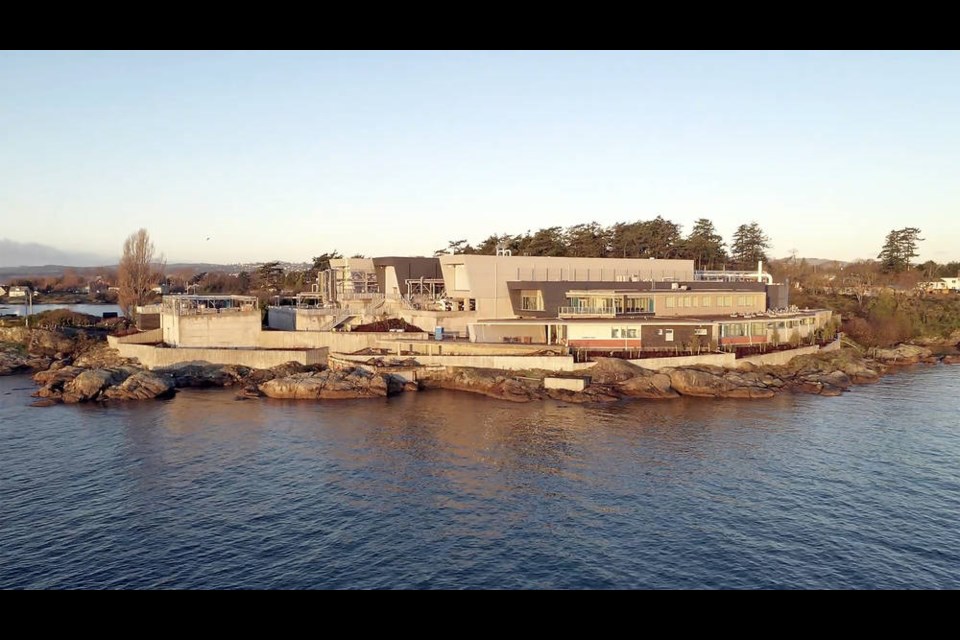Victoria and surrounding municipalities are no longer dumping untreated sewage into the ocean — much to the delight of our neighbours south of the border.
Washington state Governor Jay Inslee, who has a house on Bainbridge Island, is among those welcoming news that, after four years of construction, the Capital Regional District’s $775-million Wastewater Treatment Project has begun treating sewage at the McLoughlin Point plant.
“I was wondering why the water looked so clean in front of my house in Bainbridge here,” Inslee quipped in a recorded video call with Premier John Horgan, released by the CRD on Tuesday.
“I don’t live actually on the shore, but I know we’re going to enjoy the fruits of your leadership. I know that you played a role in this as did our predecessors.”
Horgan replied that it took “an awful lot of people over an awful lot of decades, but we finally did the right thing.”
Noting that Victoria began dumping sewage into the Strait of Juan de Fuca in 1894, Horgan said the “so-called perfect flush” worked better for B.C.’s capital city than it did for its neighbours.
Colin Plant, who chairs the CRD board, said in an interview that district officials have been running system checks for the past month to make sure everything was working properly. “But we are now in a position to say we will be treating our wastewater from now on, into the future, forever.”
It’s an important milestone given that not too long ago people were threatening a tourism boycott of Victoria as long as it kept dumping its sewage into the strait, he said.
“So welcome. Come on back.”
Plant said the McLoughlin Point plant will exceed federal and provincial regulatory requirements for treating sewage from Victoria, Oak Bay, Saanich, Esquimalt, View Royal, Langford, Colwood, and the Esquimalt and Songhees First Nations.
“We’re pleased to be able to say to the residents that we are treating our wastewater beyond what is required [in order] to do what is right for the oceans and our environment,” he said.
The McLoughlin Point plant, which has the capacity to handle population growth, will treat the equivalent of 43 Olympic-sized swimming pools of wastewater every day to a tertiary level — one of the highest standards possible, the CRD said.
James Skwarok, who used to make public appearances as the man-sized turd, Mr. Floatie, to draw attention to Victoria’s sewage mess, welcomed the CRD’s announcement.
“Our initial group called POOP — People Opposed to Outflow Pollution — I think we were very successful in raising attention or awareness that Victoria needed sewage treatment and we did it in a fun way,” he said.
“I think we’re all very happy that it’s finally done and that we now have tertiary treatment. We know that our marine environment will be healthier for it, and we’re very proud that we could help bring this project to fruition.”
As part of the project, a Residuals Treatment Facility at Hartland Landfill will convert leftover sludge into Class A biosolids, which will be used as fuel by a cement plant on the Lower Mainland.
Some construction work is ongoing, but is expected to conclude by spring. More than 650 people worked at 24 sites during the peak construction period, the CRD said.
The CRD spent $316 million on the project with $248 million coming from the province and $211 from the federal government.



